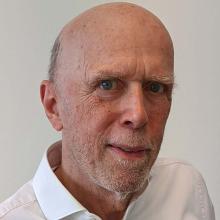Hyperopia in children
In 1971, the American optometrist Theodore Grosvenor published a remarkable paper on hyperopia entitled "The neglected hyperope".1 In this publication, Grosvenor discussed the disproportion between the number of publications on hyperopia compared to myopia. He referred to Duke Elder, who in his historical "Textbook of Ophthalmology, Volume IV" dealt with hyperopia on only 12 pages, but with myopia on 48 pages.2 Also in 1968, the Cumulative Index to the American Journal of Optometry listed 95 references to myopia and only 25 to hyperopia over the past 44 years, which corresponds to a ratio of 1 : 3.8.1 A PubMed search on 21 October 2023 found a similar ratio with 29,834 publications on myopia and 5,556 on hyperopia, which is a ratio of 1 : 5.36. Although we are now seeing a significant increase in publications on hyperopia, the ratio of myopia versus hyperopia publications has not changed significantly compared to the data published by Grosvenor in 1971.
An interesting clinical study on hyperopia and its effects on different visual functions was recently published by Hopkins et al. in the prestigious British journal Ophthalmic and Physiological Optics (OPO).3 Integrated into the clinical study were 280 children from 2 Australian schools with an average age of 11.7± 3.38 years. Forty-nine % of the children were male. Forty-one per cent of the study participants reported about an eye examination by an optometrist in the past or they had participated in a vision screening. The children had a comprehensive eye examination by an experienced optometrists in a quiet classroom at their school.
The eye test performed as part of the full eye examination included among others the determination of distance and near visual acuity and the quantification of stereopsis. Objective refraction was assessed with 1% tropicamide using the NVision-K5001 autorefractor. Children with a hyperopia of ≥ +2 D in one or both eyes were classified as clinically significant hyperopic. A spherical refractive error (> 0.00 and < +2.00 D) was defined as emmetropic or slightly hyperopic. Thirty-two (12%) of the children were clinically significant hyperope and 225 children (86%) were emmetrope or mild hyperope. Significant differences in visual function existed between the children with a clinically significant hyperopia and those with emmetropia or mild hyperopia.
This comprehensive study once again showed the importance of early childhood eye examinations and/or vision screening. In this context especially early childhood hyperopia with its partial influence on near vision, should receive increased attention.
With this in mind, I wish all readers and authors all the best for the New Year 2024 and hope you continue to enjoy OCL.
References
[1] Grosvenor, T. (1971). The neglected hyperope. Am. J. Optom. Arch. Am. Acad. Optom. 48, 376-382.
[2] Duke-Elder, S. (1949). Text-Book of Ophthalmology. Vol. IV: The Neurology of Vision; Motor and Optical Anomalies. St. Louis, C. V. Mosby Co., pp. 4444-4450. Hopkins, S., Read, S. A., Cox, R. A.,
[3] Oduro, B. A., Strang, N., Wood, J. M. (2023). Hyperopia in schoolchildren: Investigating the impact on vision and determining appropriate methods for screening. Ophthalmic Physiol. Opt., 00, 1-10.
